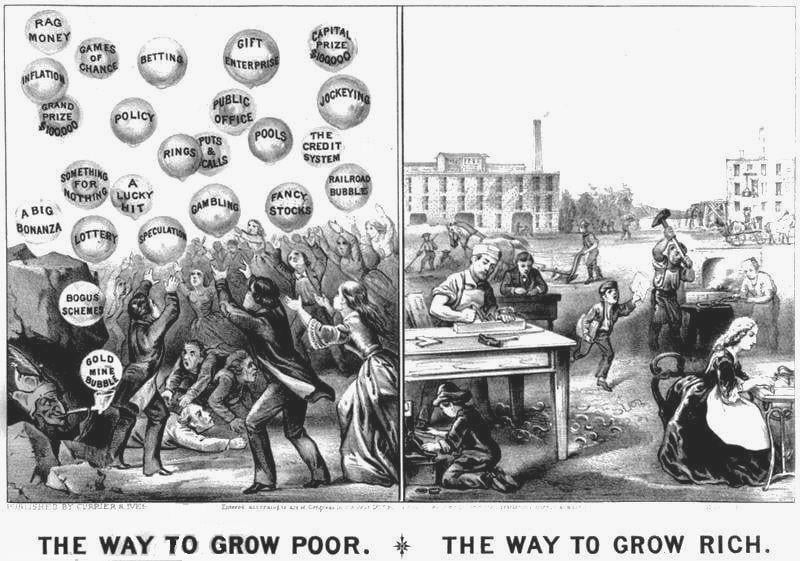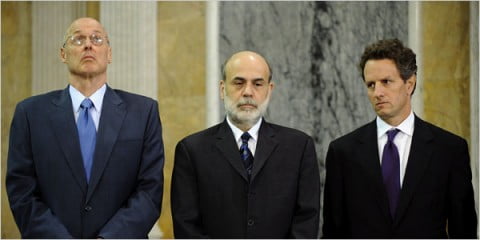 Greens and Libertarians:
Greens and Libertarians:
The Yin and Yang of our Political Future
by Dan Sullivan
Over the past three decades, people have become dissatisfied with both major parties, and two new minor parties are showing promise of growth and success. They are the Libertarian Party and the Green Party. These are not the only new parties, but they are the only ones that promise to attract people from across the political spectrum. Most other small parties are either clearly to the left of the Democrats or to the right of the Republicans. Such parties would have a place in a system that accommodates multiple parties, but are doomed to failure in a two-party system.
The Libertarian Party is made up mostly of former conservatives who object to the Republican Party’s penchant for militarism and its use of government to entrench powerful interests and shield them from market forces. The Green Party is made up mostly of former liberals who object to the Democratic Party’s penchant for centralized bureaucracy and its frequent hypocritical disregard for natural systems of ecological balance, ranging from the human metabolism and the family unit to the ecology of the planet.
Both minor parties attempt to adhere to guidelines that are much clearer than those of either major party. Libertarians focus on rights of individuals to control their own lives, limited only by the prohibition against interference with the rights of others. These rights include their right to the fruits of their labor and the right to freely associate and form contracts. They advocate limiting government to protecting those basic rights.
Greens advocate ten key values (ecological wisdom, grass roots democracy, social justice, non-violence, decentralization, community-based economics, post-patriarchal values, respect for diversity, personal and global responsibility, and sustainable future focus as a guide for government as well as for their own party organization.)
These different guidelines underscore basic differences between the approaches of the two parties and their members. Libertarians tend to be logical and analytical. They are confident that their principles will create an ideal society, even though they have no consensus of what that society would be like. Greens, on the other hand, tend to be more intuitive and imaginative. They have clear images of what kind of society they want, but are fuzzy about the principles on which that society would be based.
Ironically, Libertarians tend to be more Utopian and uncompromising about their political positions, and are often unable to focus on politically winnable proposals to make the system more consistent with their overall goals. Greens on the other hand, embrace immediate proposals with ease, but are often unable to show how those proposals fit in to their ultimate goals.
The most difficult differences to reconcile, however, stem from baggage that members of each party have brought with them from their former political affiliations. Most Libertarians are overly hostile to government and cling to the fiction that virtually all private fortunes are legitimately earned. Most Greens are overly hostile to free enterprise and cling to the fiction that harmony and balance can be achieved through increased government intervention.
Republicans and Democrats will never reconcile these differences, for whatever philosophical underpinnings they have are overwhelmed by vested interests that dominate their internal political processes. These vested interests thrive on keeping the distorted hostilities alive and suppressing any philosophical perspectives that might lead to rational resolution of conflict.
But because minor parties have no real power, they are still primarily guided by values and principles. Committed to pursuing truth above power, they should be more willing to challenge prejudices and expose flaws in their current positions.
There is nothing mutually exclusive between the ten key values of the Greens and the principles of the Libertarians. By reconciling these values and principles, we can bring together people whose allegiance to truth is stronger than their biases.
This could be of great value to both parties, partly because any new party that wants to break into a two-party system has to appeal to a broad spectrum of voters. But even more importantly, each party needs attributes the other has to offer. Libertarians need the intuitive awareness of the Greens to keep them from losing touch with people’s real values, and Greens need the analytical prowess of the Libertarians to keep them from indulging in emotional self-deception. Libertarians can teach Greens about the spirit of enterprise and the wonders of economic freedom, and Greens can teach Libertarians about the spirit of compassion and the wonders of community cohesion.
Reconciliation is absolutely necessary. Even if one of the parties could rise to power, it could do great harm by implementing its current agenda in disregard for the perspective of the other. Moreover, proposals that violate values and principles of one party often violate those of the other. If members of both groups come together to discuss each other’s proposals, they are likely not only to find areas of agreement, but to find conflicts between each group’s proposals and its own principals. If this happens, and the two parties work in concert, they stand a real chance of overtaking one of the major parties and drastically altering the political power structure.
Many third parties have had important impacts on American politics, but the last time a political party was dislodged was when the Republicans knocked the ailing Whig party out of contention over 130 years ago. It should be noted that the Republicans were a coalition of several minor parties with seemingly differing agendas, including the Abolitionist Party, the Free-Soil Party, the American (or Know-Nothing) Party, disaffected northern Democrats, and most of the members of the dying Whig Party. A similar coalition of parties has a much better chance of repeating this success today.
Anyone who looks at current national platforms of Greens and Libertarians will conclude that bringing these groups together is no easy task. For example, the Libertarian platform states dogmatically that they “oppose any and all increases in the rate of taxation or categories of taxpayers, including the elimination of deductions, exemptions, or credits in the name of ‘fairness’, ‘simplicity’. or ‘neutrality to the free market.’ No tax can ever be fair, simple, or neutral to the free market.” On the other hand, the national platform of the Greens leaves one with the impression that they never met a tax they didn’t like.
Yet the historical roots of the Greens and the Libertarians are quite similar. That is, early movements for alternative, intentional communities that live in harmony with nature greatly influenced, and were influenced by, anarcho-syndicalists who advanced principals now embraced by the Libertarian Party. This essay will attempt to show that the differences that have emerged are due less to stated principals and values of either group than to the baggage members have brought to each party from their liberal and conservative backgrounds.
On Conservatism and Liberalism
It is said that Libertarians have a conservative philosophy and Greens have a liberal philosophy. In reality, conservatism and liberalism are mere proclivities, and do not deserve to have the name “philosophy” attached to them. People who have more power than others are inclined to conserve it, and people who have less are inclined to liberate it. In Russia, as in feudal England, conservatives wanted more government control, as government was at the root of their power. Liberals wanted more private discretion.
In the United States today, where power has been vested in private institutions, conservatives want less government and liberals want more. What passes for conservative and liberal “philosophies” is merely a set of rationalizations that power-mongers hide behind.
Conservative support for traditional approaches and liberal support for new ways of doing things also follows from the desire for power. Traditional approaches have supported those now in power, and change threatens to disrupt their power. Changes are often embraced by conservatives once they prove unable to disrupt the underpinnings of power.
For Greens and Libertarians to rise above the power-based proclivities of liberalism and conservatism, they must focus on their roots and reconcile their positions with their philosophical underpinnings.
On the Roots of the Greens
In The Green Alternative, a popular book among American Greens, author Brian Tokar states that “the real origin of the Green movement is the great social and political upheavals that swept the United States and the entire Western world during the 1960’s.” As part of that upheaval, I remember the charge by elders that we acted as though “we had invented sex.” Mr. Tokar acts as though we had invented Green values.
Actually, all the innovative and vital features of the Greens stem from an earlier Green movement. The influx of disaffected liberals to the movement since the sixties has actually imbued that movement with many features early Greens would find offensive.
This periodical, for example, has been published more or less regularly since 1943, calling for intentional communities based on holistic living, decentralism, sharing natural bounty, freedom of trade, government by consensus, privately-generated honest monetary systems and a host of other societal reforms. Yet the founder, Ralph Borsodi, wrote extensively about the evils of the state, and would clearly oppose most of the interventionist policies brought to the Green Party by disaffected liberals and socialists. The same can be said of more famous proponents of Green values, such as Emerson and Thoreau.
The Green movement grew slowly and steadily and quite apart from mainstream liberalism throughout the sixties and seventies. In the eighties, however, it became clear that the liberal ship, and even more clear that the state socialist ship, was headed for the political rocks. The left had simply lost credibility, even among those who felt oppressed by the current system. Gradually at first, discouraged leftists discovered the Green movement provided a more credible platform for their positions.
Because of their excellent communications network, additional members of the left quickly discovered the Greens, embraced their values (at least superficially), joined their ranks and proceeded to drastically alter the Green agenda. For example, early Greens pushed for keeping economies more diverse and decentralized by promoting alternative, voluntary systems, and by criticizing lavish government expenditures on interstate highways, international airports, irrigation projects, and centralized bureaucracies that discriminated against small, independent entrepreneurs. Today the National Platform of the Green Party calls for “municipalization” of industry (that is, decentralized socialism), limits on foreign trade to save American jobs (which they insist is not protectionism), and other devices to create artificial decentralization under the guiding hand of some benevolent central authority.
The influence of Greens who are fond of government intervention (referred to as Watermelons by more libertarian Greens) seems to be strongest at the national level and weakest within most Green local organizations. Despite the National Green Platform’s resemblance to a new face on the old left, many people who are genuinely attracted to Green principles are either undermining or abandoning the left-dominated Green Party USA. Specifically, the principal of decentralism is being used to challenge the right of a national committee to dictate positions to local Greens. This is fortunate for those of us interested in a coalition of Greens and Libertarians, as reconciliation between the Green Left and libertarianism is clearly impossible.
On the Roots of Libertarianism
The Libertarian Party was born in 1970. Like the Green Party, it has philosophical roots that extend far back into history. It emerged, however, at a time when conservatism was in decline. Just as Greens attract liberals today and are strongly influenced by the liberal agenda, Libertarians attracted conservatives and were influenced by their agenda. However, as Libertarians are more analytically rigorous, there are fewer blatant inconsistencies between their positions and their principles.
Libertarian bias tends to show up more in prioritization of issues than in any particular issue. For example, Libertarians are far more prone to complain about the capital gains tax than about many other taxes, even though there is nothing uniquely un-libertarian about that particular tax.
Many Libertarians ignore classic libertarian writings and dwell on the works of Ayn Rand, Murray Rothbard and Ludwig von Mises. The classical libertarians get mere superficial attention. For example, few have read Tragedy of the Commons, but many quote the title. Specifically, they are unwilling to recognize that the ecological mishaps like those referred to in that work had been absent for centuries when almost all land was common. As with the tragedy of the reservations, commons were abused because so many people had to share access to so little land. All this was a result of government sanction, allowing vast tracts of commonly held land to be appropriated by individuals without proper compensation to those who were dispossessed of access to the earth. These facts are ignored because they cannot be reconciled with pseudo-libertarian conservatism.
Just as contemporary Greens have fondness for government and contempt for private property that their forebears did not share, Libertarians take an extreme position on private property and have hostility to all forms of government that their philosophical predecessors did not share.
Their refusal to acknowledge natural limits to private property and their insistence of unlimited protection of property by the state is their one great departure from their predecessors and their principles. For example, they dismiss the following statement by John Locke, known as the father of private property:
God gave the world in common to all mankind. Whenever, in any country, the proprietor ceases to be the improver, political economy has nothing to say in defense of landed property. When the “sacredness” of property is talked of, it should be remembered that any such sacredness does not belong in the same degree to landed property.
They similarly ignore Adam Smith’s statement that:
Ground rents [land values] are a species of revenue which the owner, in many cases, enjoys without any care or attention of his own. Ground rents are, therefore, perhaps a species of revenue which can best bear to have a peculiar tax imposed upon them.
Private ownership of the earth and its resources is the one area where Libertarians depart from their own philosophy. After all, their justification of property is in the right of individuals to the fruits of their labor. Because the earth is not a labor product, land value is not the fruit of its owner’s labor. Indeed, all land titles are state-granted privileges, and Libertarians deny the right of the state to grant privileges.
Even here, Libertarians are on solid ground when they argue that freedom could not survive in a society where land tenure depended on bureaucratic discretion. They are split, however, over devices like land value taxation that would, with a minimum of bureaucracy, put the landless in a more tenable position with respect to land monopolists. Just as liberals dominate the National Greens, conservatives dominate the Libertarian position on this issue, though many Libertarians, including Karl Hess, former editor of the Libertarian Times, do not share that conservative position.
Again, this is a key issue for reconciliation. The Green tradition cannot be reconciled with pseudo-libertarian claims that a subset of the people can claim unlimited title to the planet.
The Magic of Honest Compromise
Compromise is too often a process whereby people on each side give up what they know to be right in order to gain a supposed advantage for their interest group. What I am proposing is that each side give up supposed advantages in order to harmonize with what is right. It takes an open mind and a great deal of courage, but the results can be magnificent.
If the Libertarians accept that ownership of land is a privilege, and agree to pay a fair rent (or land value tax) for that privilege, they will hold the key to getting rid of property (building) tax, income tax, sales tax, amusement tax, and a host of other taxes.
Furthermore, statistical evidence indicates that land value tax promotes compact, harmonious use of land and eliminates a root cause of poverty. In this case, adopting land tax can reduce the need for zoning and protection of rural land, and for housing projects, welfare, and a host of bureaucratic services for the poor.
Greens who study this issue will find that small and simple combination taxes that are essentially payments for exclusive access to common resources will address most of their interests without complicated and intrusive bureaucracies. Land tax itself will eliminate land speculation and land monopoly, and will promote orderly development of land in cities and towns, taking developmental pressure off suburban and rural land.
Severance taxes on our common heritage of non-renewable resources can even-handedly reduce the rate of exploitation of these resources, conserving them for future generations.
Finally, taxes on pollution are really payments for exclusive use of our common rights to clean air and water. It reflects that the air and water is less valuable to the rest of us when it is polluted, and those who pollute literally owe us for the right to trespass on our air and water.
Of course ending land monopoly will not solve all the problems by itself, but it is the key area where Greens and Libertarians are separated from each other as well as from their own principles. Once this is reconciled, we can more readily work together on other issues where we are in agreement, such as liberating our monetary system the banking monopoly, ending military domination of foreign peoples, and ending government interference against people who commit victimless “crimes.”
Greens and Libertarians: The Yin and Yang of our Political Future was first published in Green Revolution (Vol. 49-2, Summer of 1992) by the School of Living, and also circulated to Libertarian newsgroups.
Positive feedback having been received from within both camps, it’s interesting to contemplate what a powerful combination it might be were Greens and Libertarians able to obviate their excesses and unite politically against the obviously moribund economics of the Democrat and Republican parties.












